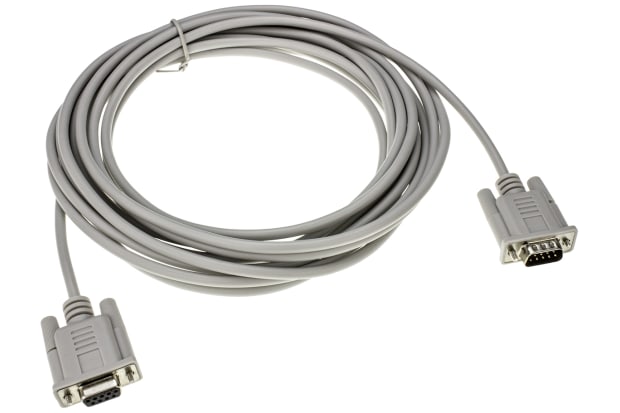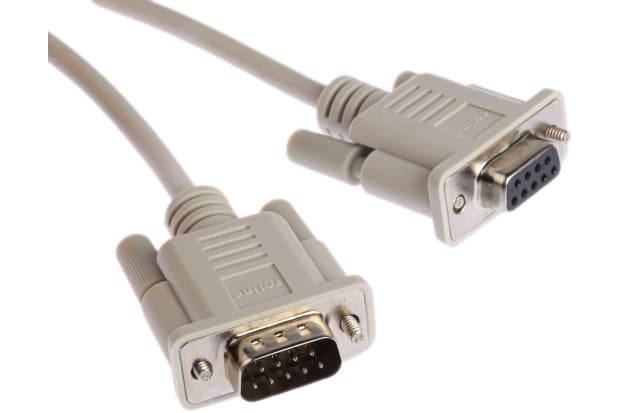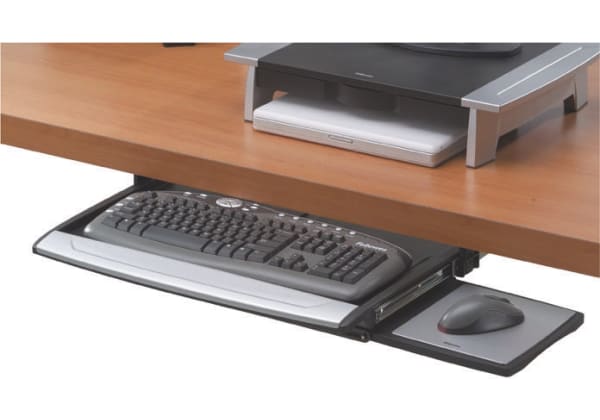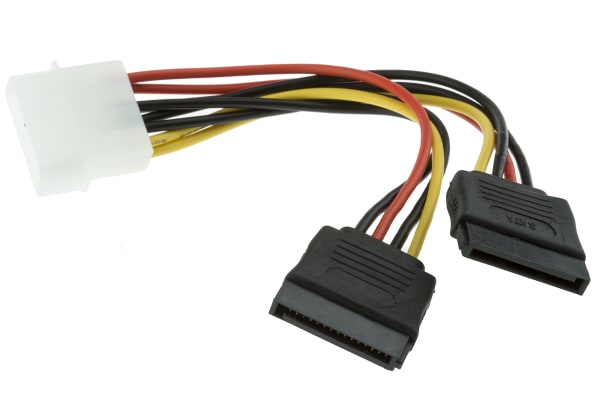- Published 18 Apr 2023
- Last Modified 29 Aug 2023
- 5 min
What is RS-232?
The RS-232 cable is the standard for serial communication, with a wide range of uses.

Communication and the transfer of information are fundamental parts of progression and technological development. In this guide, we explain the long-standing function of the RS-232 cable and its uses.
What is an RS-232 Cable?

An RS-232 cable in simple terms is a cable that was designed to allow serial communication and is sometimes referred to as a serial connection.
Serial communication, or the RS-232 Protocol, is the method of transferring or communicating data one bit at a time in a series fashion. The RS-232 cable is what allows this type of communication to take place, passing data from one device to the other. The protocol includes a simple set-up of a transmit line (TX Line), a receiving line (RX Line) and a ground line (GND Line), one bit of data at a time is sent through the TX line and received through the RX Line.
Even more so, this sort of data transfer has a long history, with it first appearing in the 1960s, with the intention of communicating information from teletypewriters to modems. The RS-232 cable then went on to be one of the most standard forms of data transfer, with the cable being updated to allow for data transmission on computers.
Today there are two RS-232 cable types, the first being a DTE cable, standing for Data Terminal Equipment. The second cable is called a DCE, standing for Data Communication Equipment. RS-232 cables are pinout cables, meaning that the pins from the cable protrude and slot into the RS-232 connector. Both cables use a 9-pin connector, with these pins including a GND line, TX line, RX line, Data Carrier (DCD) line, Data Terminal Ready (DTR) line, Ring Indicator (RI) Line, Clear to Send (CTS) line, Request to Send (RTS) line and Data Set Ready (DSR) Line.
These pins are sectioned into categories of data, reference and ground pins. The GND line falls into the ground category, the RX and TX line are data pins, and all the rest are reference pins.
RS-232 delivers its data in series, rather than parallel. This is a benefit because it requires fewer wires as it’s less complex and therefore less expensive.
What is the Difference Between RS-232 and RS-485?
Whilst established as a standard for serial communication, the RS-232 cable’s older technology has had to be updated to keep up with technological advancements, which has led to the development of the RS-485 cable. But what are the differences between the two cables? How do they serve different functions?
Firstly, the RS-232 was designed to transfer data between two devices, meaning that its design application is limited. However, with the introduction of the RS-485, transmitting data across multiple points is now an option. The RS-485 was specifically designed to transfer data across multiple points, meaning that this communication method now has a wider reach.
Unlike the RS-232 cable, the RS-485 cable can also transfer data across longer distances. The RS-485 has a much larger maximum cable length than the RS-232, and can also deliver a larger amount of data. Its maximum cable length is approximately 4000 ft and can transfer 100kbps of data. This differs from the RS-232, whose maximum cable length is 50ft, with a data transfer of 20kbs.
Even more so, the signalling is more unbalanced in an RS-232 cable, meaning that it is prone to more interruptions which could slow the speed of data transfer. This is different in an RS-485 cable, whereby the signalling system is more balanced, and therefore prone to fewer interruptions.
That being said, the more complex nature of the RS-485 cable makes it a more complicated and expensive installation. Where data needs to be sent to multiple points at a quicker rate, it is the better option. However, if you are wanting to send data between two devices, with ease and on budget, the RS-232 cable is probably the better choice. Plus, RS 232 to RS 485 converters are now available, allowing for more functionality in an RS-232 cable.
How to Use an RS-232 Cable

An RS-232 cable is used to communicate information from one device to another. These ports are found on flat-screen monitors and on bar scanners. They help with communication between systems and machinery, being able to be used to produce a command function. They are used mostly in industrial settings but can be used in conjunction with older PC technology. They can also connect PCs to CCTV cameras and small devices, such as computer mice. They can be used in processors to connect different parts of a system and transfer data securely.
Even more so, where <u>USB cables</u> have made RS-232 cables obsolete, converters are now available to extend the usage of these cables. USBs have replaced RS-232 in many ways, but with a converter, you are still able to use your RS-232 cable in place of a USB cable.
When using an RS-232 cable, it is likely that whilst the cable is transferring the physical data, you will conduct or command the data through third-party software. So whilst your cable is transferring the data between your modem and your monitor, you will be commanding that data through third-party software.
Further Reading
Related links
- Serial Cables
- StarTech.com Female 9 Pin D-sub to Male 9 Pin D-sub Serial Cable, 3m PVC
- RS PRO RS232 USB A Male to D-sub, 9 Pin Male Converter Cable
- StarTech.com Male 9 Pin D-sub to Male 3.5mm Stereo Jack Serial Cable, 1m PVC
- MOXA RS422 RS-485 Port PCI RS232 RS485 Serial Card
- Roline Male 9 Pin D-sub to Female 9 Pin D-sub Serial Cable, 10m
- MOXA RS-232 Port PCI RS232 Serial Card
- MOXA RS422 RS-485 Port PCIe RS422, RS485 Serial Card


